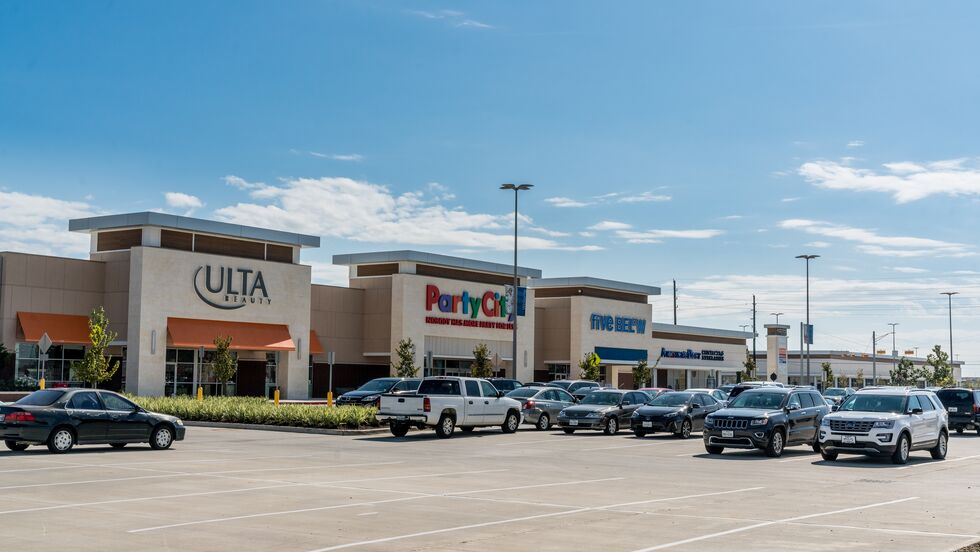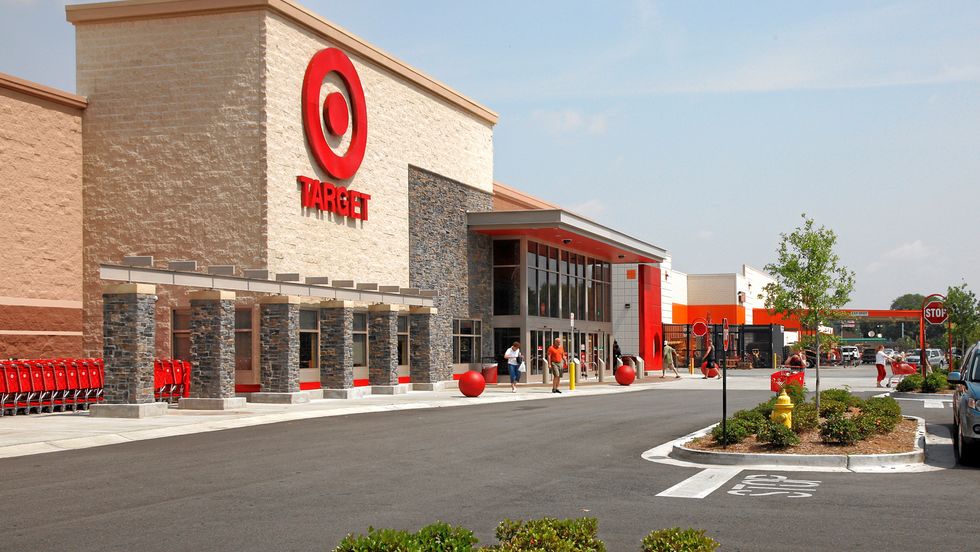Retail real estate fundamentals appear to be holding up at mid-year, with demand for space remaining solid as supply continues to be constrained. Meanwhile, consumer spending patterns and retailer distress are among the issues to watch in the months ahead, in addition to changes in retail space utilization and the potential for REITs to take advantage of market dislocation.
REIT.com spoke with sector analysts Lindsay Dutch at Bloomberg Intelligence, Wes Golladay at Baird, and Linda Tsai at Jefferies LLC about how they view the outlook for REITs that own retail real estate.
Can you describe retail real estate fundamentals at mid-year, and what you are expecting as you look ahead to the rest of 2023?
Lindsay Dutch: Retail real estate fundamentals remain quite solid heading into the second half. Occupancy is strong as tenant distress has proved less of an issue than expected so far, and store closings from retailer bankruptcies appear limited and manageable given demand strength. We expect the demand divide between mall and off-mall to become more visible heading into 2024, with stronger rent growth—the key driver for NOI growth in 2023-24—expected to be in off-mall.
Wes Golladay: The fundamental backdrop remains favorable despite an uptick in tenant bankruptcies. Tenant retention is historically high for many companies and new lease demand remains good. The recent auction of leases for Bed Bath & Beyond highlighted the solid demand for anchor space.
We would expect a continuation of the first half trends with tenant retention high and retailers taking a long-term view toward leasing new space. There remain a few tenants that are struggling, but a few have found ways to source capital, which provides visibility for continued rent payment over the near term.
Linda Tsai: Fundamentals have held up. No new development and the lack of available quality space are reflected in peak occupancy, healthy leasing volume, and renewal spreads. In the second half of 2023, signed but not occupied pipelines will bolster earnings, but weaker lending conditions and a stretched consumer means lower topline revenues for retailers, who are facing margin pressures still. This portends retailer distress and more store closures.
How strong is the consumer today, and where are they concentrating their spending?
Golladay: Consumer spending has returned to normal levels after outsized growth following record stimulus. High inflation has taken away a large share of the wage growth, which has acted as a headwind, though we would expect lower income consumers to be more impacted. Secular trends such as work from home should bolster sales in suburban locations and we would expect omni-channel retailing to remain a tailwind for brick-and-mortar locations.
Tsai: The labor market is strong. Unemployment is 3.6% and wage gains have continued. Still, inflation and the spend down of $2 trillion in COVID stimulus from the government, and the Silicon Valley Bank collapse, have stressed the consumer. Foot traffic in malls and restaurants has receded in recent months. Consumers are spending less on bigger ticket discretionary items like furniture and home improvement projects. Private label sales at mass merchandisers are faring better as consumer stretch dollars. Travel and leisure seem to be holding up.
Dutch: The consumer, as a whole, has remained relatively resilient, though we have seen pullbacks in discretionary spending, specifically for lower income consumers. Even with some pullback, we’re still seeing strength within some discretionary categories, including leisure/travel, experiences, and beauty.
We expect the demand divide between mall and off-mall to become more visible heading into 2024, with stronger rent growth—the key driver for NOI growth in 2023-24—expected to be in off-mall.
What are elements of winning strategies that you are seeing across the retail REIT space today?
Tsai: The industry in which retail REITs operate is mature. Bolt-on acquisitions can inject growth into multiyear forecasts beyond initial G&A savings. We think investors want to see more strategic M&A. It provides an avenue of external growth, so a stronger, larger operator (acquirer) can deliver higher returns to shareholders vis-a-vis a lower cost of capital, deeper tenant relationships, inject a more disciplined leasing philosophy, and support institutional quality redevelopment and development, which is never devoid of risk or complication. Acquirers with these capabilities can achieve improved multiples in this current environment where accretive growth is more challenging.
Golladay: Focusing on leasing and optimizing the existing tenancy and using free cash flow to reduce leverage is a winning strategy. The balance sheet is a primary area of focus now that interest rates have moved higher, so addressing interest rate risk including floating rate debt and near-term maturities is of high importance.
Dutch: Winning strategies start with a strong balance sheet. We think REITs with the strongest balance sheets are best positioned for portfolio and rent growth.
Do you think the impact of retailer distress and bankruptcy has largely been absorbed at this point?
Dutch: I think retailer distress, bankruptcy, and store closings are manageable, based on what’s been announced so far, but not yet fully absorbed.
Golladay: The strong leasing activity over the last few years led to many companies having a large pipeline of leases that are scheduled to open over the next few years, which should help companies absorb earlier than anticipated move-outs due to bankruptcies. The key going forward is to maintain solid leasing activity and for multiple bankruptcies to not occur in a short period of time.
Tsai: The liquidation of Bed, Bath & Beyond (BBBY) and Buy Buy Baby is the largest in a long time and introduces 15 million square feet of retail into the market. That said, there is much less availability now versus when the last major bankruptcies occurred. Further, there’s about 50 million square feet of space under construction currently versus 300 million headed into the great financial crisis, according to CoStar.
The majority of the BBBY leases will be filled by new retailers quickly because landlords have been working on this for some time. That said, there’s still a decent list of tenants that may need to close stores or restructure. While a lot of these tenants represent nominal exposure for REITs on an absolute basis, they may still add up to have an impact, especially as we look towards 2024. Bigger box retail seems to be faring better and value stores like Ross, T.J. Maxx, Burlington, and dollar stores are still net openers. Net-net, it’s a little bit mixed, but we could see some impact on earnings growth in 2024 as a result of downtime.
Where do you see transaction activity heading in the months ahead–both for assets and portfolios as well as larger M&A activity?
Golladay: The cost of capital for the shopping center REITs has materially increased since the Federal Reserve moved to a restrictive monetary policy and sellers have been reluctant to adjust pricing to a level sufficient for deals to make sense. Moreover, there remains ample liquidity in the market, which is limiting distressed opportunities.
Regency Centers Corp. (Nasdaq: REG) was able to reach an agreement to acquire Urstadt Biddle Properties Inc. (NYSE: UBA and UBP) as both parties agreed on a stock for stock deal at a valuation that was accretive for Regency. Fund redemptions, expiration of interest rate swaps, or debt maturities could lead to more motivated sellers over the next year, but the timing is hard to predict.
Dutch: Although retail cap rates have risen this year, bid-ask spreads still appear wide. We think further increases may be required before M&A picks up. We think retail REITs are looking for buying opportunities and await tighter bid-ask spreads.
Tsai: Transaction volumes are down significantly, and REITs are trading at historically wider discounts to net asset value (NAV). With debt maturities coming due and the 10-year Treasury still expected to increase modestly, these seem like ripe conditions for more assets to come to the market and better-capitalized REITs to take advantage of market dislocations from both an individual asset and M&A perspective.
What are you seeing in terms of retail real estate supply?
Dutch: New retail real estate supply remains extremely limited, a trend we expect to extend into 2024.
Tsai: There is minimal supply under construction. There will be shadow supply from retailer store closures. Because of the lack of supply, you are also seeing leases being bought during bankruptcies, which hasn’t happened for several years.
Golladay: There has not been much supply in the shopping center space since the great financial crisis. However, we view the sharp rise of e-commerce as a form of supply as it offered another avenue for retailers to distribute goods. Looking forward, we don’t expect a material increase in retail supply due to higher borrowing costs for developers.
With debt maturities coming due and the 10-year Treasury still expected to increase modestly, these seem like ripe conditions for more assets to come to the market and better-capitalized REITs to take advantage of market dislocations from both an individual asset and M&A perspective.
Is mixed-use development, and retail’s role within it, here to stay?
Tsai: Yes, retail and services improve the merchandising of a mixed-use development, helping the pricing power of apartments or offices. The retail is an amenity for its users, who are a built-in audience. The different uses are synergistic and make the overall center more valuable.
Dutch: Mixed-use is here to stay, but it doesn’t work everywhere. We’d expect most new and re-development to be built around mixed-use or to have the potential to add other uses, like residential, but the format won’t dominate the retail real estate landscape—at least for a very long time.
Golladay: We believe mixed-use development is here to stay due to the benefits of having multiple property types such as office, retail, and residential together. Many companies are finding it difficult to motivate workers to return to the office on a regular basis. The combination of having residential units along with a good mix of goods and services retailers near an office should provide corporate tenants a relative advantage in motivating employees to return more frequently to the office. Having multiple property types together should also lead to a more vibrant atmosphere with high traffic throughout the day.
Are there other topics or trends connected to retail real estate that you are watching?
Dutch: Another trend I am watching is retailer demand to move off-mall. Tenants like Foot Locker, Bath & Body Works, and Macy’s are at varying stages in their plans to shift store footprints to off-mall.
Golladay: We are always interested in seeing how the tenant mix is changing and any differences in how retailers are utilizing their space.
Tsai: Experiential retail given post pandemic shifts of hybrid work, and increased socializing in order to spend time with family and friends is a boon for owners of retail real estate. With limited supply, experiential and entertainment help draw steady traffic. One risk to watch, however, is the health of the consumer and the popularity of some new concepts—which are often private equity backed—as consumer tastes can shift quickly, driven by the power of social media.


